"Portraits of Fayoum"... 900 paintings that bring to life Egyptian faces who lived 2000 years ago

It has been described as the oldest paintings depicting the human face. For the first time in human history, it goes beyond the framework of side drawing. The ancient Egyptian artist used to draw faces from the side, even if the body was from the front or back. This can be seen in the drawings of Pharaonic temples, which made it a school. In particular, it was distinguished by its departure from the familiar ancient Egyptian framework, and through it, Egypt opened up to the outside world after it had been closed in on itself.
“Fayoum Portraits”... These paintings that were found attached to mummies dating back to the Roman era in the Fayoum region, are of a unique nature, in which Egypt opened up to the outside world, after it had been closed in on itself. In them, the face is drawn completely from the front, and slightly turned in some parts. On the left, it depicts some people who lived more than two thousand years ago, and although some disagree about the nature of those faces, between Egyptian, Greek-Roman, or even Byzantine, the names written on them are Greek, and the clothes, hairstyles, and jewelry are of a Roman character.
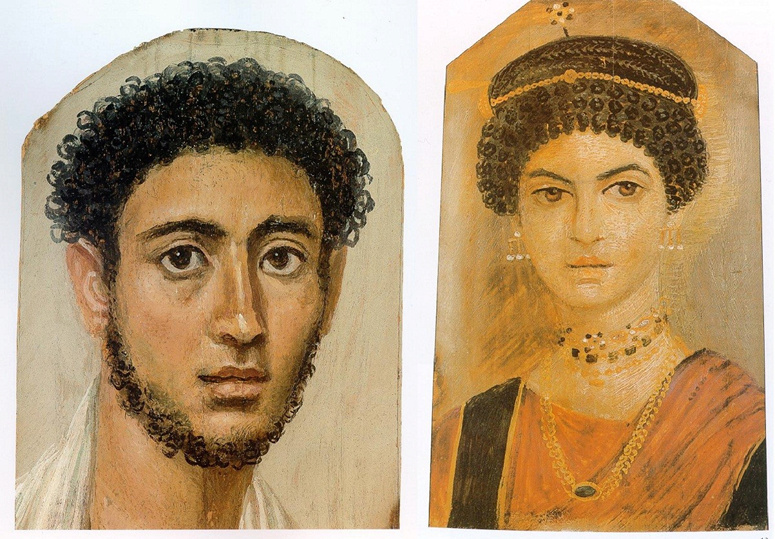
More than four centuries ago, specifically in 1615 AD, the land of Fayoum began to unearth its precious treasure, when the Italian traveler Pietro Della Valle found the first of these portraits, and archaeological discoveries continued, after which he transported some of them to Europe, to settle in the halls of... Albertinum” at the Museum of Modern Art in the German city of Dresden. Throughout the four centuries, 900 paintings were found in the Fayoum tombs, still in their original condition, due to the region’s hot, dry climate.
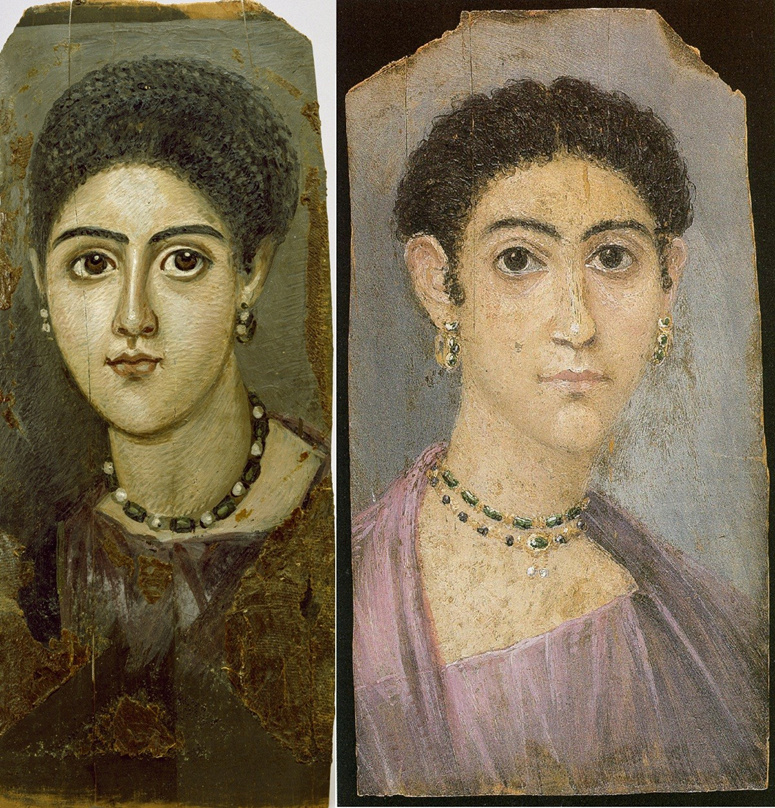
The “Faces of Fayoum” have a unique character of their own. They were not just traditional funeral drawings, but rather personal drawings that show the features of the person buried inside the coffin. They lean towards Greco-Roman art, and are distinguished by their calm, timeless looks, which made the French philosopher and novelist “André Malraux” He describes them as faces looking forward to eternal life. Rather, he believes that they are real faces that match reality, or as if they represent an intermediate area between life and death. Therefore, these paintings are a mixture of the three civilizations: Pharaonic, Greek, and Roman.
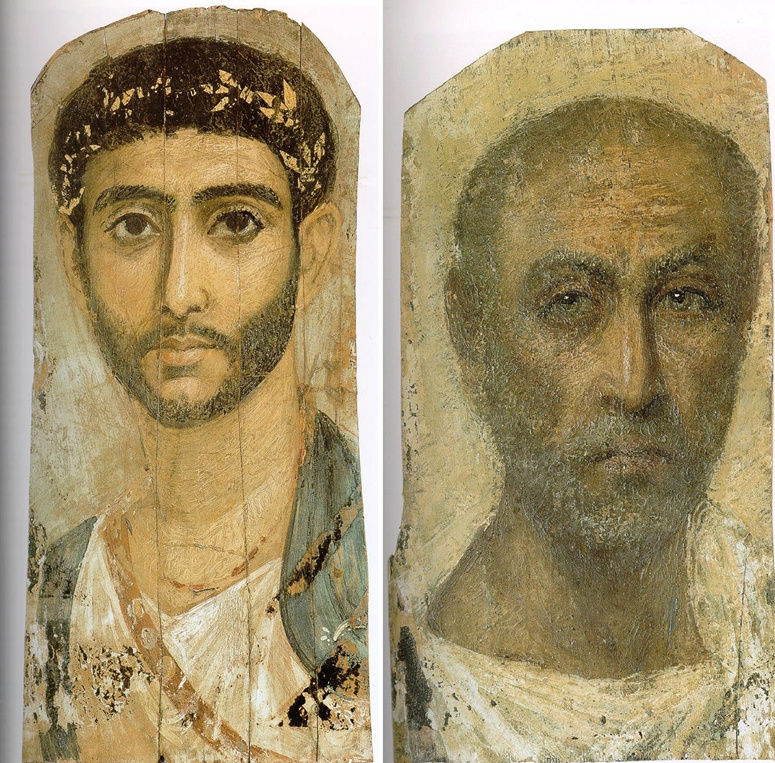
Historians unanimously agree that painting on wood in Egypt began at the beginning of the first century BC, when the ancient Egyptian would draw pictures of his dead in color on wooden panels placed on the mummies. With the disappearance of the custom of mummification in the third century AD, this art disappeared, especially with the appearance of Coptic symbols. , which is considered a natural extension of Egyptian art in the third and fourth centuries AD, which led to the inclusion of these faces within Coptic art.
Although some of these paintings were found in areas far from Fayoum, such as Saqqara, Al-Alamein, and Sheikh Obada, they were given that name because most of them were found in the Fayoum Basin region, specifically from the Hawara region to central Egypt. The lack of writing about them is due to a number of reasons, the most important of which is The artists who painted them are unknown, and the paintings are scattered around the world, sometimes in several halls of the same museum, between the Egyptian, Greek, and Coptic departments.
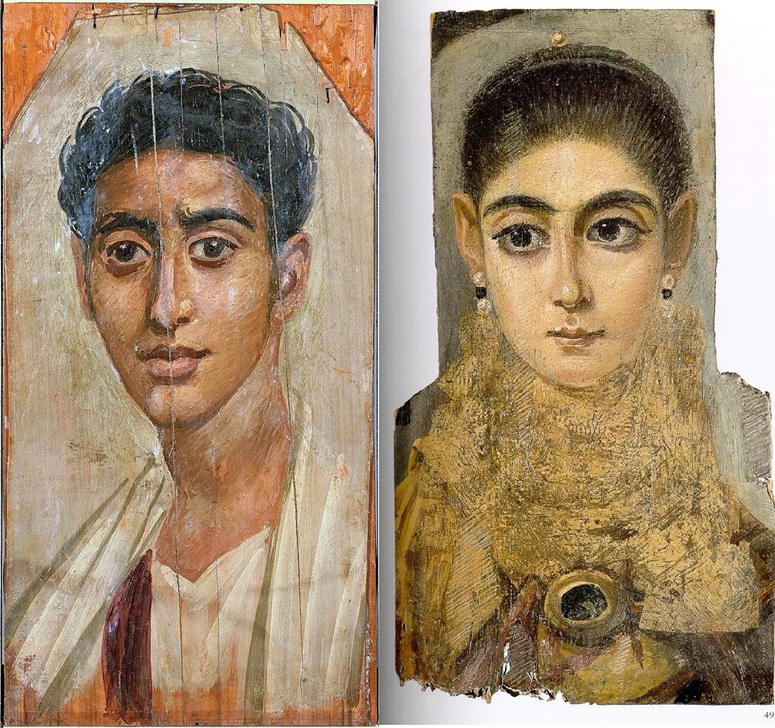
The British Egyptologist Flinders Petrie was the one most interested in excavating the Hawara area in 1887. He was able to find 81 portraits in a Roman cemetery, and he displayed them in a London exhibition. In 1910, he found 70 portraits, bringing the total of his discoveries to 151 paintings. Most of them are in the Cairo and London Museums, and although his studies of them do not rise to modern standards, they remain the most important source for regular excavations.
When the French doctor, Daniel Marie Fouquet, heard about the discovery of these paintings in 1887, he re-examined the tombs that were found, but he found only two paintings, while the Austrian antiquities dealer, Theodor Graf, who went to these tombs shortly after Daniel’s visit, was able to... 300 paintings were found from the Rubiyat area northeast of Fayoum, noting that the first portrait to reach Europe was discovered in the Saqqara pyramid in 1615 by Pietro Della, who was one of the first European travelers to the region. Due to the dry and hot climate of the Fayoum region, the paintings were preserved. Excellent, to the point that the colors of many of them appear as if they have not dried yet.
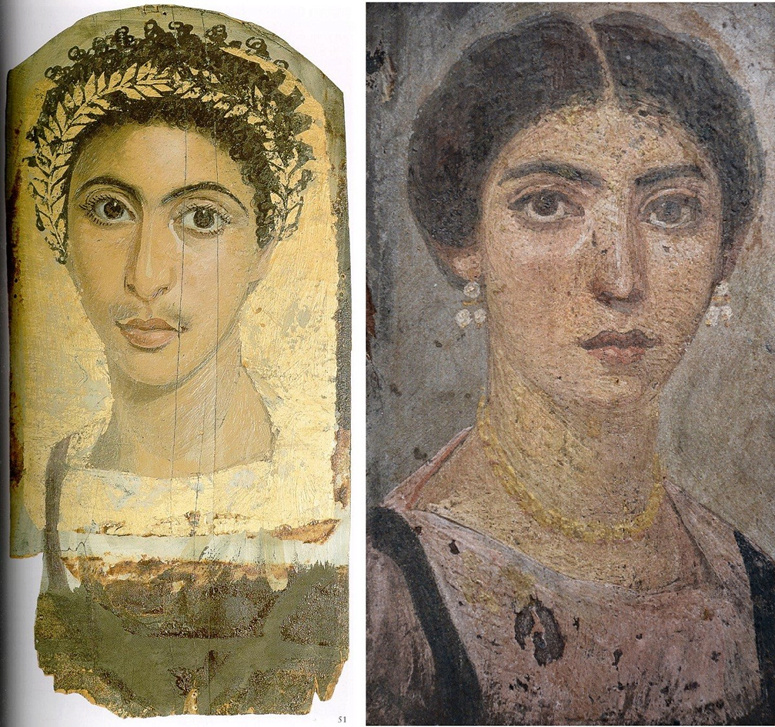
Some believe that the Fayoum paintings were painted during the lifetime of their owners, and their owners kept them hanging on the walls of their homes until death, to be placed later on the face of the mummy, although some believe that some of them were painted after the death of their owners, and that sometimes paintings were found without Mummies, as happened with the British archaeologist Flinders Petrie in his discoveries in the city of Hawara, north of the Great Pyramid of Amenemhat III and the site of the Labyrinth Palace in 1887. Excavations revealed 146 mummies with portraits, and among them were drawings that were in the best condition and the most wonderful. Art
The painters of Fayoum paintings used wood from cypress, sycamore, or lemon trees, with a thickness not exceeding a centimeter. Then, in later eras, their thickness ranged between half a centimeter and 2.5 centimetres, with a length of up to 42 centimeters, and a width of about 22 centimetres. The painter used to By painting directly on the wood, and sometimes after applying a layer of plaster, or directly on the fabric, or after covering the fabric with a layer of plaster, then polishing it well, then the image was painted in black and rarely in red, while the background was colored with a thick brush, and perhaps a knife was used to paint the color. Thick paint instead of brush, using wax painting method.
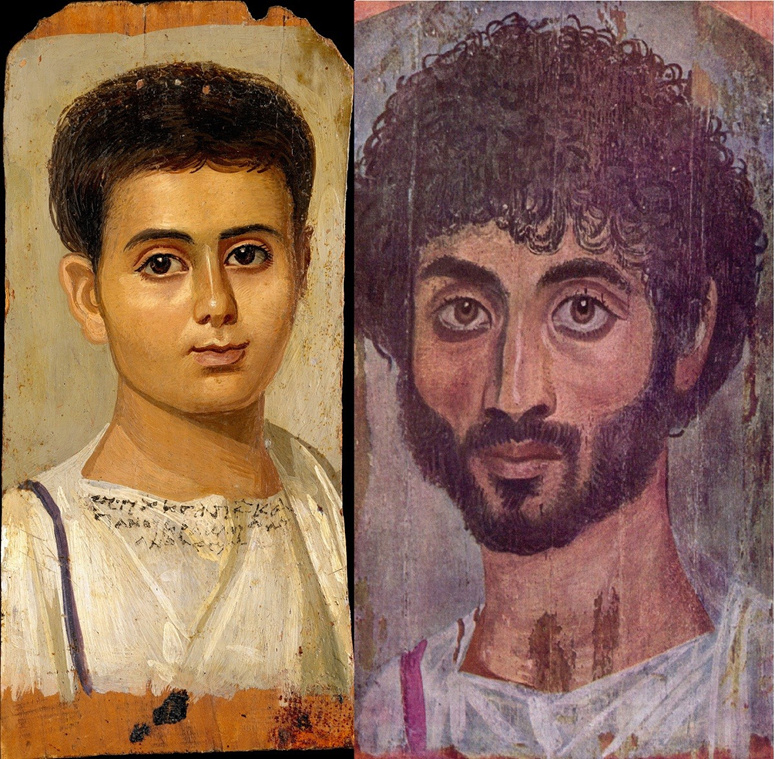
Fayoum paintings were painted in four basic colors: white, yellow, red, and black, and they were used to paint the hair and face. Additional colors, such as blue, green, and purple, were used to color clothes, jewelry, and crowns, which formed a wonderful harmony. The golden color was added to the jewelry. For crowns and clothing decoration, either original gold leaf, or a color that mimics gold, was used. They used egg whites to paste the gilding paper onto the painting painted with wax colors, which was what the Byzantine civilization later inherited.
The most important question now is, who are the owners of those pictures? Are they Egyptians? Or do they belong to another nationality? The indisputable fact is that to this day we only know some of the owners of those faces, especially if the pictures are still on the mummy. The name was written on the mummy's box, on the scrolls, and on the effects attached to the dead person in Greek or in the Demotic script. At other times, the name was written in white in Greek or in the Demotic script on the neck of the person in the picture. Most of these names are of Greek origin, such as Artemidos, Deimos. ,Hermione.
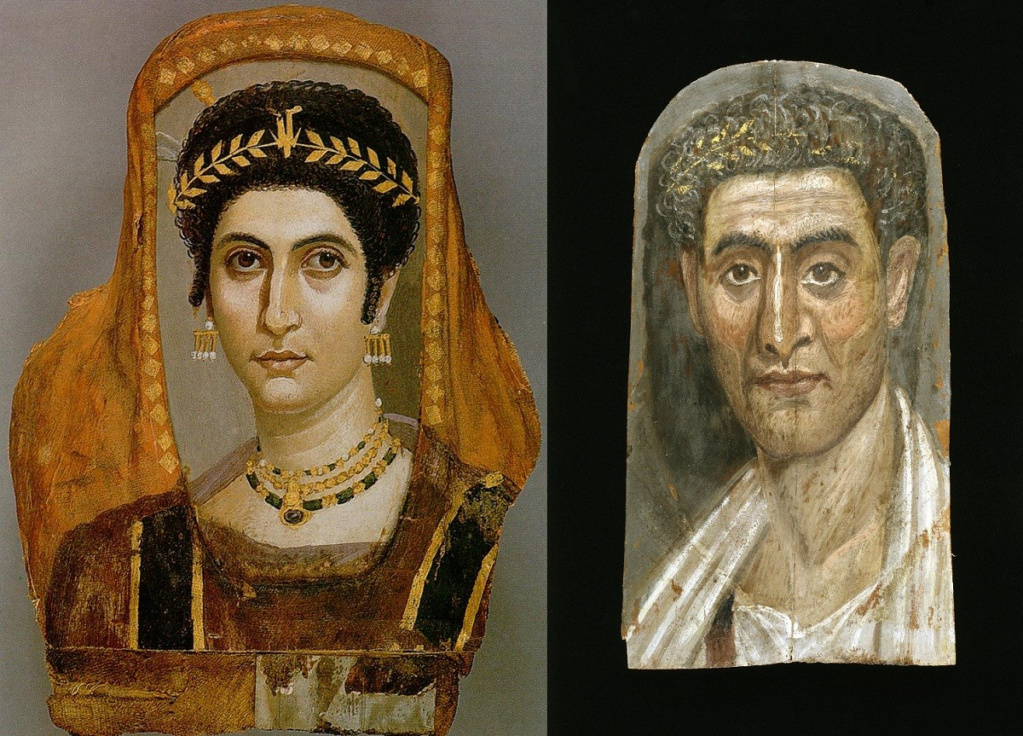
Source: websites

